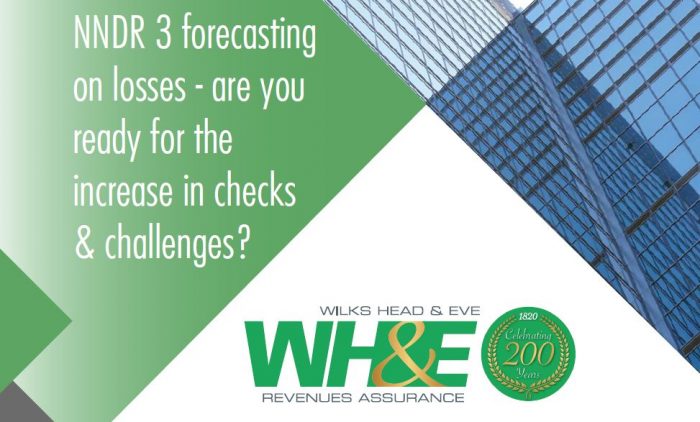
Every Billing Authority has the responsibility of completing an NNDR3 form and submitting it to the Secretary of State and their major precepting Authorities by 30th April each year. The NNDR3 is the tool by which Authorities arrive at a calculation of their certified non-domestic rating income for the year. As an audited document, it is used to help establish an Authorities set of draft accounts for that year.
Whilst a great deal of the data used to populate the NNDR3 return is pulled from a Councils IT system (such as rateable values, number of properties and relief allocations) there are some parts that can have significant impacts and these also require Councils to make forecasts. These are primarily based on analysis of data and having a good understanding of any challenges likely to be made by businesses or organisations who believe they are paying too much in business rates and are appealing to have this reduced or made exempt.
Submitting the most accurate NNDR3 form possible means that Billing Authorities need to have a solid mechanism in place for forecasting their losses on appeals made by businesses looking to reduce their rates liability. Get it wrong and this can lead to a serious reduction in budget allocated to the Billing Authority in the following year or potentially needless cuts made to service delivery.
The Goldilocks Principle
There tend to be three different approaches used by Billing Authorities to assist in forecasting for losses on appeal. At Wilks Head & Eve we refer to it as the Goldilocks principle, as for us there is only one sure-fire approach which results in more accurate NNDR3 form submissions.
Algorithms – too hot
The first approach relies solely on algorithms and draws across all national data where decisions have been made on specific appeals and a collective approach is agreed upon on how to deal with all similar ‘types of appeals’ going forward. These typically become more refined and accurate over time which is great, but they do not take into account local issues and data, they also don’t take into account ‘unknown appeals’. These are the appeals that an experienced valuer is more likely to spot based on an individual set of circumstances a particular ratepayer may have put forward. In short, they don’t take account of local circumstances. Lastly by relying solely on algorithms it is our experience that Billing Authorities tend to subsequently submit overestimated figures on their NNDR3 form resulting in an overprovision for appeals.
Percentage-based figures – too cold
This approach again relies on the national data where Billing Authorities will look at general trends occurring in regards to ‘decisions made on appeals’ and changes made to various national schemes and the implications of these. They will then apply a general percentage figure using this high level national data to say for example ‘we believe that 20% of appeals in our area will be upheld’ in this case they would then look to apply that 20% to their provisioning figure. The problem with this approach is that it starts out inaccurate and generally stays this way, there is also the tendency to underestimate, leading to high risk of not having made sufficient of a provision for losses and a potential drop in the Authorities budget in the year ahead. This approach also does not take into account the unknown appeals, further complicating matters.
Expert Valuation – just right
At Wilks Head & Eve we have a proven methodology which we believe is at least 80% more accurate than our nearest competitors. It applies not only the national data and moves beyond just relying on historical appeals to project future losses. It takes a detailed look at and analysis of the Valuation List, examining current outstanding appeals whilst taking into account potentially unknown appeals and hereditaments likely to be subject to appeal. Taking a line by line approach and looking at Local appeals in conjunction with national data, means you arrive at a more accurate, meaningful figure from the outset.
With us now just nearly one year out from the end of the rating list and the Valuation Office Check, Challenge and Appeal systems proving to be more workable, we expect to see a significant increase in Checks and Challenges and a substantial number of these backdating to April 1st 2017. Are you confident that your current approach takes into account all the variables we have highlighted in this article?
For further details contact Alistair Townsend from the Revenues Assurance team email atownsend@wilks-head.co.uk or call 07903 314301.
